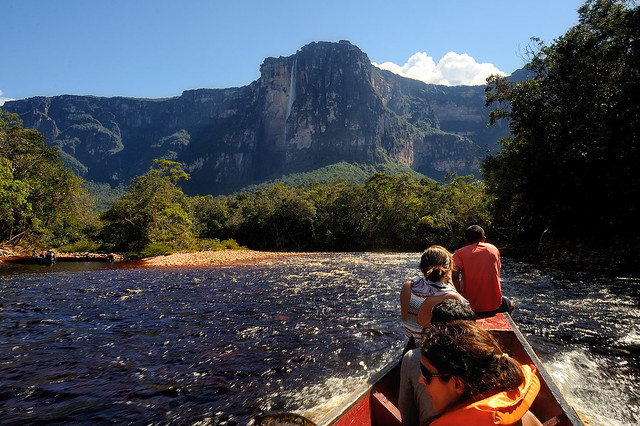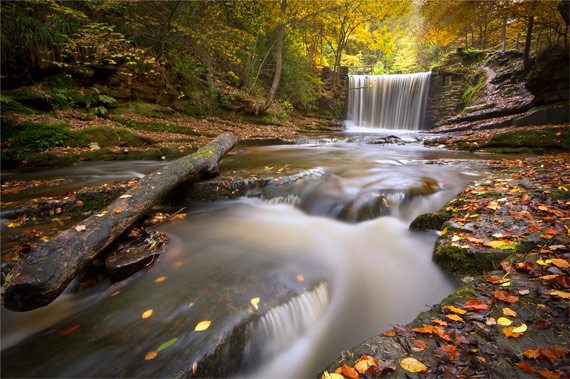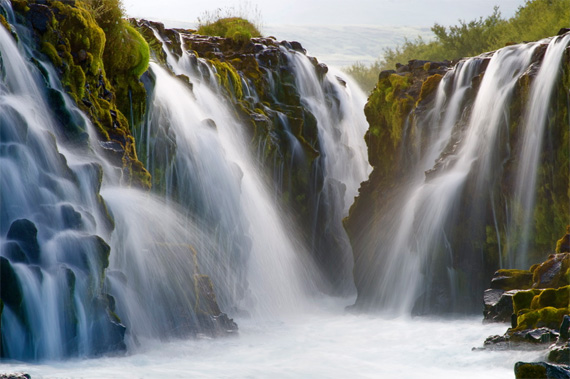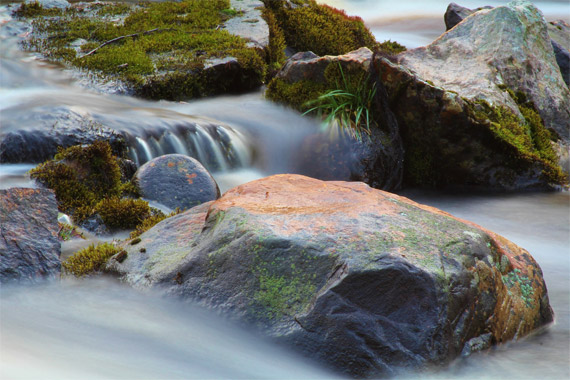The highest waterfall in the world is Angel Falls in Venezuela, South America. It measures 3,212 ft (979 meters). Getting a good photo of Angel Falls could be a challenge simply because it is so high. You have to get the right lens—probably a wide angle lens—and you must find the right position from which to shoot. The waterfall is nearly a kilometer in height.

“Salto Angel” captured by Paulo Capiotti
Not everyone wants to travel to Venezuela to capture the world’s highest falls, but photographing waterfalls is fun and rewarding when you see the results of your efforts in print.
Here are ten tips that will help you get the best photos from your efforts:
1. Height adds drama. Even if a trip to South America is out of the question, you can find waterfalls that are dramatic because of how tall they are. (If you live near Norway, you are in luck. Seven of the top 20 highest falls are in Norway.)
2. Check the weather. Of course, you don’t want to be out in weather that is not conducive to getting good photos, but more importantly, make sure the place you will be traveling to has had enough precipitation. Periods of low rain or snow could lead to a disappointing flow of water.

“Dead Leaves And The Dirty Ground” captured by Mark Broughton
3. Plan your trip. Make sure you familiarize yourself with the best time of day for your photo adventure. Even though early morning and late afternoon are usually the best times for lighting, they may not be optimal for the waterfall you have chosen. Find out what the lighting conditions are where you will be shooting to get the best results.
4. Change your perspective. Normal waterfall photographs take in the whole waterfall, but being creative with your position can get you some stunning results. Try getting above or underneath. You will want to protect your gear if you are in the spray area, but it may be worth the effort. Sometimes there are boats to take you right up to the bottom of the falls, and in other places there are falls that you can go behind.

“When water meets rocks…” captured by Ævar Guðmundsson
5. Composition changes photos. Try different focal lengths and positions to add interest. Include scenic objects such as tress and rocks to increase interest as well. Your camera and lens choice can be a major factor in your photo shoot. Again, change lenses to see what the difference is.
6. Use a filter. Waterfalls offer some very wide ranges of color and lighting. A neutral-density filter may be just the thing for adding depth of color range to your shots. Polarizing filters may also be helpful.
7. Check your shutter speed. Some of the most dramatic shots are made with either a very slow shutter speed or a very fast shutter speed. Slow gives a nice, silky look. Fast will stop water drops in mid-air to add drama. Try both.
8. Take a tripod. Steady is good, especially when slowing down the shutter speed. You want smooth and silky, not blurry. Also try using a delayed shutter release or remote release switch when using slow shutter speeds.
9. Check your white balance. You can make use of camera presets such as cloudy or sunlight, but using a filter can change how the camera perceives the correct white balance. One way to overcome this problem is to shoot in RAW mode. Then you can set the white balance in your post processing using Photoshop or some other editing software.
10. Use bracketing. Most camera have the ability to bracket exposures up to three stops. This will help get all the light ranges into the shot. You will need to combine the bracketed exposures in post processing; some cameras now have HDR capability built right into the camera software.

“Smooth rocks” captured by Simon Lambert
No matter which waterfall you choose to photograph, take lots of shots, change lenses, and try different camera settings. The most disappointing experiences are when you get back to your computer and discover you could have made a few minor adjustments and gotten much better results.
About the Author:
Wayne Rasku has been an amateur photographer since 2003. He runs sites related to photography classes in Atlanta, Georgia, and a Canon lens organization site.
For further training, amazing offers ending soon: Black Friday Photography Deals
Go to full article: Waterfall Photos: 10 Tips for Photographing Water
What are your thoughts on this article? Join the discussion on Facebook or Google+
Article from: PictureCorrect